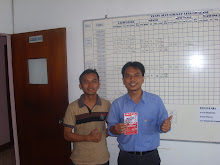Narration
Narration is the form of writing used to relate the story of acts or events. Narration places occurrences in time and tells what happened according to natural time sequence. Types of narration include short stories, novels, and news stories, as well as a large part of our everyday social interchange in the form of letters and conversation.
Description
Description reproduces the way things look, smell, taste, feel, or sound; it may also evoke moods, such as happiness, loneliness, or fear. It is used to create a visual image of people, places, even of units of time-days, times of day, or seasons. It may be used also to describe more than the outward appearance of people. It may tell about their traits of character or personality.
a. People
To reflects personality.
Character may be portrayed directly or indirectly.
b. Places
To describe how places look, smell, and sound.
c. Units of Time
Descriptions of units of time are often used to establish mood.
Exposition
Exposition is used to in giving information, making explanations, and interpreting meanings. It includes editorials, essays, and informative and instructional material.
a. Process
Exposition may be used to explain a process, that is, to tell how something is made or done.
The essential steps must be stated clearly in logical sequence.
b. Definition
An explanation of what a word or a term means is another kind of exposition.
The simplest form is a statement of, first, the general class to which the word belong, and second, its distinguishing features.
c. Analysis
To divide a subject into parts and examine those parts.
d. Criticism
Involves evaluation, that is, analyzing and weighing strengths and weaknesses.
The book review is a familiar form of criticism.
Argumentation
Argumentation is used in persuading and convincing. It is closely related to exposition and is often found combined with it
Senin, 25 Mei 2009
Langganan:
Posting Komentar (Atom)








.jpg)




Tidak ada komentar:
Posting Komentar
Silahkan Kasih Masukan